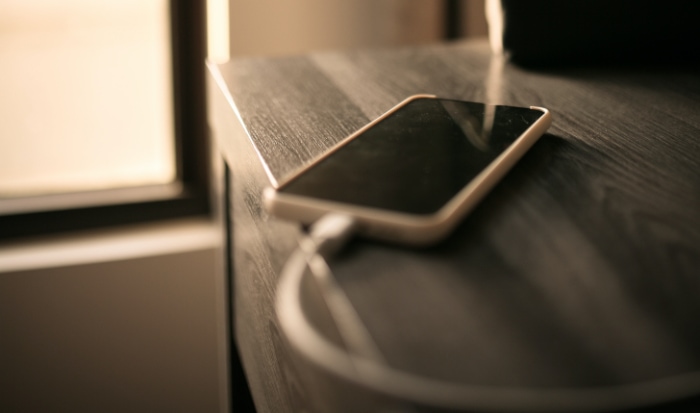Why Is My Phone Charger Hot? Behind the Heat

Our modern, interconnected world relies heavily on one unsung hero: the humble phone charger. It powers our communication, navigation, entertainment, and more, working tirelessly to ensure our devices are always ready when we need them.
Yet, how many of us have paused during a charging session, surprised by the heat emanating from our phone chargers and wondered, “Why is my charger so hot?”
Heat generation in chargers isn’t unusual; in fact, it’s a common occurrence that many of us overlook. However, it’s essential to understand why our phone chargers get hot, what causes excessive heating, and when it could potentially signal a problem.
Basic Understanding of Phone Chargers
Phone chargers, at their core, are a type of power supply unit. They are designed to convert high voltage alternating current (AC) from a wall outlet into low voltage direct current (DC) that your phone’s battery can safely use. This process involves two main steps:
AC to DC Conversion: This is where the ‘brick’ part of your charger comes in. It contains a transformer and a rectifier. The transformer reduces the voltage, and the rectifier changes the AC into DC.
Regulation: The converted DC current is then regulated to ensure that a stable, constant supply of power is given to your device, preventing damage from voltage spikes or drops.
Types of Phone Chargers
Understanding different types of phone chargers can also help us comprehend why they might heat up.
USB Chargers: These are the standard phone chargers that come with most smartphones. They connect to a power source via a USB plug and transfer power through a micro-USB, USB-C, or Lightning (for Apple devices) connector to your phone.
Wireless Chargers: These chargers use electromagnetic fields to transfer energy between two objects. Your phone needs to be Qi-compatible, and when placed on the wireless charging pad, it begins charging.
Fast Chargers: These chargers deliver higher levels of current to your phone’s battery, charging them significantly faster. However, this increased speed may also result in more heat being generated.
Each type of charger has its unique design and functioning principles, which can contribute differently to the heat generation process. In the subsequent sections, we’ll explore how and why this happens.
The Science Behind Heating Chargers
Now that we have a basic understanding of how phone chargers work, let’s explore the science behind why they heat up. This will help explain why your charger might get warm during use and when you might need to be concerned.
Energy Transfer and Heat Dissipation
The process of energy transfer from a charger to a phone is not perfectly efficient. Some of the energy is lost in the form of heat due to resistance in the electrical components.
This is a fundamental concept in physics known as Joule’s First Law, which states that the heat produced by a current flowing through a conductor is proportional to the square of the current. In simple terms, when electricity flows, it meets resistance, and this resistance generates heat.
The charger, while converting AC power to DC and reducing voltage levels, also generates heat due to the internal components’ electrical resistance.
Effect of Fast Charging
Fast charging, as the name suggests, charges your phone at a faster rate. This is achieved by increasing the current (amount of electricity) sent to the device.
However, as we learned from Joule’s First Law, an increase in the current also increases the heat produced. Therefore, fast chargers often generate more heat compared to standard chargers.
The Role of the Phone’s Battery Condition
The condition of your phone’s battery can also contribute to charger heat. As batteries age, their internal resistance increases, which in turn increases the amount of heat produced during charging.
Furthermore, if a battery is deeply discharged, it may draw a higher current when first plugged in, leading to more heat being generated.
Understanding the science behind heating chargers is crucial to recognize what is normal heat generation and when it could signify a potential issue. This knowledge can help us manage our devices better, extending their lifespan and ensuring safe usage.
Is It Normal For Your Phone Charger To Get Hot?

It is completely normal for your phone charger to get a bit warm during the charging process. As we explored earlier, the process of converting AC to DC, lowering the voltage, and overcoming the resistance in electrical components naturally generates heat.
So, a slight increase in temperature is expected and usually isn’t a cause for concern.
However, a phone charger becoming too hot to touch is not normal. If your charger is overheating, it may signal an underlying issue with the charger itself, the phone’s battery, or how the charging is being done.
This is the kind of abnormal heating that warrants attention and possible corrective action.
When to Worry: Identifying Red Flags
Identifying the difference between normal and abnormal heating can help ensure your charger’s safe and efficient operation. Here are a few red flags to watch out for:
Excessive Heat: If the charger becomes so hot that it’s uncomfortable or painful to touch, it is overheating. This is not a normal occurrence and should be addressed.
Smell of Burning or Melting Plastic: If you notice an odd smell coming from your charger or see signs of melting or discoloration on the charger or the cable, disconnect the charger immediately. These are signs of serious overheating.
Charging Interruptions or Slow Charging: If your phone stops charging intermittently or charges slower than usual, it could be a sign of an overheating charger.
In case you notice any of these warning signs, it’s time to investigate further and potentially replace your charger. Always prioritize safety and don’t ignore these potential warning signs.
Common Reasons Why Your Phone Charger May Get Hot
Heat generation during the charging process is normal to some extent, but there are factors that can cause your charger to get hotter than usual.
Inefficient Charger Design
Not all chargers are created equal. Some models, particularly cheaper, non-certified versions, may lack the design efficiency and quality components required to minimize heat generation.
These chargers often overheat due to poor electrical insulation, low-quality components, or inadequate heat dissipation designs.
Overworking the Charger
Using your phone while it’s charging can lead to your charger working harder than it needs to, which can result in increased heat production. When you use your phone while charging, it demands power both for operating the phone and charging the battery simultaneously, potentially causing the charger to overheat.
Using Phone While Charging
Many of us are guilty of using our phones while they’re still plugged in and charging. However, this practice puts additional load on the battery and the charger, causing them to generate more heat than usual.
The combined heat from the phone’s processor and the charging process can cause both the phone and the charger to become unusually hot.
Non-Optimal Environment Conditions
Environmental factors can also contribute to your phone charger heating up. High ambient temperatures, for example, can prevent the charger from effectively dissipating its heat, leading to an increase in temperature.
Similarly, charging on a bed or a couch, which are poor conductors of heat, can lead to heat build-up and overheating.
Risks Associated with Overheated Chargers

Overheating of a phone charger is not just a minor inconvenience; it could pose potential risks.
Potential Damage to Your Phone’s Battery Life
Prolonged exposure to excessive heat can significantly affect your phone’s battery life. High temperatures can cause the battery to degrade faster, reducing its capacity to hold a charge over time.
This means your phone may not stay powered for as long between charges, and ultimately, it could necessitate a premature battery replacement.
Risk of Electric Shock or Fire
One of the more serious risks associated with an overheated charger is the potential for electric shock or fire. If a charger is poorly designed or damaged, high temperatures could cause the insulation around the wires to melt, potentially leading to electric shock or a short circuit, which could in turn cause a fire.
While this is a relatively rare occurrence, it’s important to be aware of this risk.
Impact on Charger’s Lifespan
Overheating not only poses risks to your phone and your safety but can also decrease the lifespan of the charger itself. Chargers are designed to work within certain temperature ranges, and consistently operating beyond these ranges can degrade the charger’s components faster, resulting in a shorter overall lifespan.
How to Prevent Your Phone Charger from Overheating
Having understood why phone chargers get hot and the risks of overheating, it’s time to take action.
Proper Usage of the Charger
Overworking the charger is one of the common reasons for overheating. So, try not to use your phone excessively while it’s charging. Letting your device charge undisturbed can prevent the charger from generating extra heat.
Maintaining a Cool Charging Environment
Keeping your charger in a cool, well-ventilated place can help dissipate heat effectively, preventing overheating. Avoid charging your phone on surfaces like a bed or couch, which could insulate heat and cause your charger to become hotter than it should.
Instead, place it on a hard, flat surface that can more effectively disperse heat.
Checking and Replacing Old or Damaged Chargers
Regularly inspect your charger for any visible signs of damage, such as fraying wires, discoloration, or deformities. A damaged charger is more likely to overheat and may even pose a safety risk.
If you spot any damage, replace your charger promptly. Similarly, if your charger is old and has been overheating more frequently, it may be time for a replacement.
Quality of the Charger
Cheaper, non-certified chargers often lack the design features and quality components necessary to minimize heat generation and maintain safe operation. Always use a charger from a reputable manufacturer and ensure it is certified for use with your specific device.
While certified chargers may cost a bit more, they offer greater safety and efficiency in the long run.
Conclusion
In today’s digital era, our smartphones are an integral part of our lives, and the chargers that keep these devices powered are equally important. However, we’ve all experienced our phone charger getting warm or even hot during use.
While a slight increase in temperature is a natural part of the charging process, excessive heat can indicate a problem and pose potential risks.
We’ve journeyed through the inner workings of phone chargers, explored the science behind heat production, distinguished between normal and abnormal heating, and discussed the risks associated with overheating. Understanding these elements is crucial for the safe and efficient use of our devices.
Additionally, we’ve identified common causes for charger overheating such as inefficient charger design, overworking the charger, using the phone while charging, and non-optimal environment conditions. By being aware of these issues, you can proactively take steps to prevent them.
To mitigate the risk of an overheating charger, remember the importance of proper usage, maintaining a cool charging environment, regular inspection, and replacement of old or damaged chargers. And most importantly, always opt for quality, certified chargers from reputable manufacturers.


